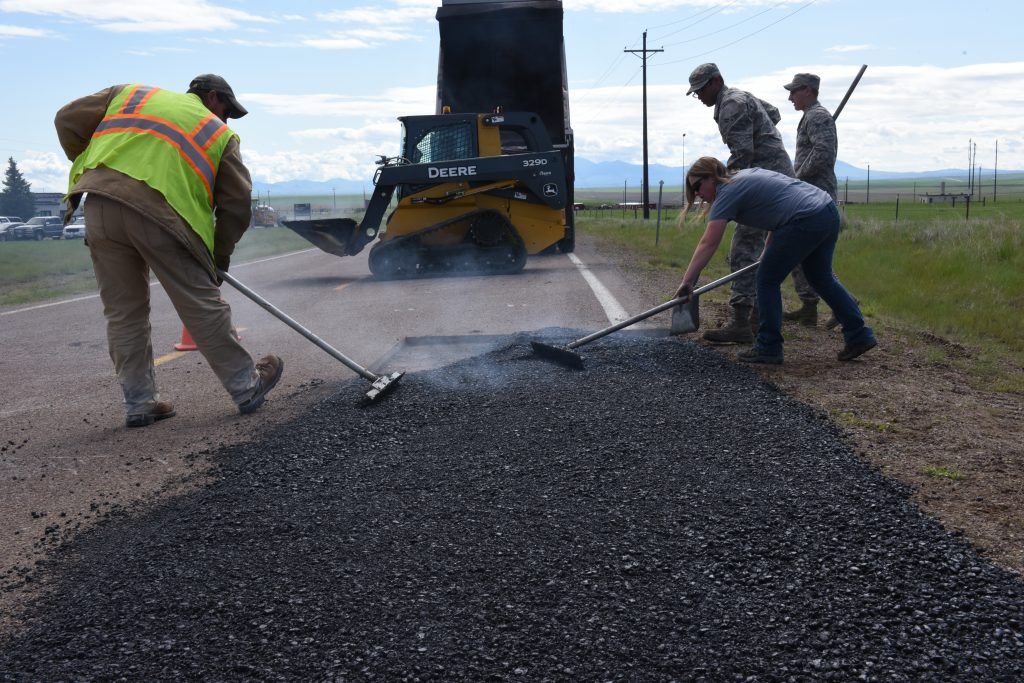Make Best Use Of Space Performance with Hot Mix Asphalt Angled Parking Lot Solutions
Make Best Use Of Space Performance with Hot Mix Asphalt Angled Parking Lot Solutions
Blog Article
Opening the Tricks of Hot Mix Asphalt Technology
Checking out the midsts of warm mix asphalt modern technology discovers a world where accurate formulas and precise processes converge to form our roadways and framework. The fusion of binders, fillers, and accumulations isn't just a construction job however a strategic orchestration of durability and effectiveness. As we peer right into the complex dance of elements, a tapestry of durability and sustainability unfolds. What exists below this surface of asphaltic proficiency, and what keys wait to be unveiled in the world of leading advancements?
Value of Hot Mix Asphalt
Hot Mix Asphalt plays a crucial role in modern framework growth as a result of its durability and cost-effectiveness. As one of the most typically used paving material for roadways, freeways, and auto parking lots, Hot Mix Asphalt uses a variety of benefits that add to its significance in building jobs. One essential advantage is its capability to withstand rush hour loads and severe weather condition conditions, giving a durable and dependable surface for transport networks. Furthermore, Hot Mix Asphalt is cost-efficient in both first building and long-lasting upkeep, making it a preferred selection for several facilities jobs.
The resilience of Hot Mix Asphalt stems from its structure, which consists of aggregates, binder, and filler products that are thoroughly chosen and mixed to satisfy certain performance demands. On the whole, the value of Warm Mix Asphalt in framework advancement can not be underrated, as it proceeds to be a foundation of contemporary building and construction methods.
Components of Asphalt Mixes
The make-up of asphalt mixes consists of carefully chosen accumulations, binder, and filler materials that are crucial for attaining details efficiency needs. Accumulations are the main component of asphalt blends, providing toughness and security. The binder, commonly asphalt or asphalt cement, holds the accumulations with each other and supplies adaptability and resilience to the mix.
The mix and proportion of these elements play a substantial function in establishing the top quality and efficiency of the asphalt mix. Engineers very carefully create the mix to meet specific needs, thinking about factors like web traffic volume, climate problems, and pavement lifespan. Appropriate selection and balancing of accumulations, binder, and fillers are important for developing long lasting, resilient asphalt pavements.
Mixing and Production Strategies

Once the aggregates are selected, the binder, usually asphalt cement, is contributed to bind the products together. The binder's quality and quantity considerably impact the mix's adaptability, toughness, and resistance to environmental elements. In addition, fillers like moisturized lime or Portland concrete might be integrated to enhance specific characteristics of the asphalt mix, such as its workability or dampness resistance.
During production, the accumulations and binder are warmed, normally in between 250-325 ° F(121-163 ° C ), to promote mixing and make certain appropriate finish of the accumulations. The mixing procedure must be thorough to accomplish an uniform mix that advertises the preferred performance characteristics of the asphalt. Various methods, such as set blending or drum blending, are employed to attain constant and top notch asphalt mixes for building and construction tasks.
Aspects Influencing Asphalt Efficiency
Variables influencing asphalt efficiency incorporate an array of variables that affect the toughness, longevity, and overall top quality of asphalt pavements. One essential element is the top quality of products made use of in the asphalt mix.

Layout considerations, such as pavement density and water drainage, are essential in guaranteeing the long-lasting performance of the asphalt sidewalk. By very carefully taking into consideration these factors, engineers and professionals can maximize asphalt efficiency and improve the service life of pavements.
Sustainable Practices in Asphalt Technology

WMA allows for the production and positioning of asphalt mixes at reduced temperatures compared to typical hot-mix asphalt, resulting in decreased power consumption and greenhouse gas discharges. The usage of porous asphalt mixes can aid mitigate stormwater overflow concerns by allowing water to penetrate via the pavement and into the ground, advertising all-natural water filtration and charge procedures.
Conclusion
Finally, hot mix asphalt technology plays a vital duty in modern-day framework development due to its sturdiness and cost-effectiveness. By meticulously stabilizing parts, using correct blending techniques, and considering various factors, engineers can create top quality asphalt mixes that endure rush hour loads and harsh weather conditions. Embracing sustainable practices, such as making use of warm-mix modern technologies and recycled products, additionally improves the environmental kindness of asphalt modern technology.
Blending and manufacturing methods in warm mix asphalt modern technology include the accurate combination and handling of accumulations, binder, and fillers to create a high-performance and check my reference durable asphalt mix.Variables affecting asphalt performance incorporate a variety of variables that affect the resilience, longevity, and total quality of asphalt sidewalks. Lasting techniques in asphalt innovation include various campaigns aimed at reducing the ecological effect of asphalt manufacturing and paving processes. By incorporating recovered asphalt pavement (RAP) and recycled asphalt tiles (RAS) into brand-new asphalt mixes, the sector can substantially decrease the intake of raw materials and power, while also lowering landfill waste.
WMA permits for the production and positioning of asphalt blends at lower temperature levels compared to traditional hot-mix asphalt, resulting in minimized energy usage and greenhouse gas exhausts.
Report this page